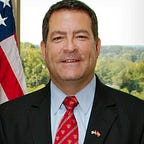New Studies Show More “Severe Obesity” in Rural Communities
Two new studies from the U.S. Centers for Disease Control and Prevention show that over the past two decades, obesity rates have risen disproportionately among children and adults in rural communities. Researchers say they are especially alarmed at the increase in severe obesity in this demographic. Cynthia Ogden, a lead author on one of the studies, told a news outlet that severe obesity brings “serious health risks” such as cancer and premature death.
While increased obesity rates have long been considered a byproduct of urbanization as people have moved to cities, become more sedentary, and gained more access to unhealthy food, researchers say the obesity epidemic now is spreading to rural areas. In response, experts generally agree that people who live in rural areas need more access to programs that show them how to make healthier choices.
“All (of) these factors such as energy-sparing technology, fast food, and desk jobs have now reached rural areas as well in the U.S., so we are seeing an escalation of the obesity epidemic,” Dr. Rekha Kumar of the Weill Cornell Medicine Comprehensive Weight Control Center recently told a media outlet.
Children and teenagers are considered obese when they weigh more than 95 percent of their peers who are the same age and sex. When their weight is 20 percent more than the top weight for obesity, they are considered severely obese. Adults who have a body mass index (BMI) of 30 or higher are classified as obese, while adults considered severely obese have a BMI of 40 or higher.
Here are some of the findings of the two studies, which collected data from adults age 20 and older and youth ages 2 to 19 in rural areas over a period between 2001 and 2016.
· Obesity rates increased by about 9 percent for young people and about 36 percent for adults.
· The rate of severe obesity among young people increased by 29 percent.
· Severe obesity rates tripled for men and double for women.
· By the end of the study period, about 10 percent of men were severely obese, compared with about 4 percent of men who live in urban areas.
· By the end of the study period, about 14 percent of women were severely obese, compared with 8 percent of women who live in urban areas.
· By the end of the study period, more than 9 percent of youth were severely obese, compared with about 5 percent of youth who live in urban areas.
· Education levels, age, smoking habits, and racial differences in rural and urban areas did not provide insight into the differences in obesity rates in adults.
· Black and Hispanic youth were more likely to be obese or severely obese than white youth, and children who lived in households led by an adult with a limited education also were more likely to become obese.
Solving the obesity problem in rural communities
While healthy eating and exercise are key to preventing and reducing obesity anywhere, researchers say that solutions that work in urban areas may not be effective in rural areas. Innovative and specialized programs are needed, experts say, to help people who live in rural areas reach and maintain a healthy weight. Teaching that food consumed has a caloric value and that weight is gained if that value exceeds the energy output through activity seems basic, but a critical starting point.
According to the website Rural Health Information Hub (RHIhub) rural clinics and hospitals can be part of the solution. RHIhub recommends that healthcare facilities offer activities and classes that encourage people to exercise and eat well and teach them to manage diabetes, choose more nutritious foods, and make choices that can prevent heart disease. Hospitals that have exercise equipment and workout areas for rehabilitation could open these facilities to the community.
Primary care doctors also can play a role in reducing and preventing obesity in rural areas, according to RHIhub, by providing patients with information and tools to manage their weight. This could include detailed materials that show patients step-by-step processes to healthier lifestyles, along with other resources that have been modified for people who live in rural areas.
Public health agencies in rural communities also can help prevent obesity by working with schools, businesses, and community groups to create programs and activities to help residents deal with obesity issues. This could include a community food policy council that promotes the availability and understanding of healthy foods, classes for the community and school children to teach people to eat more fruits and vegetables and to exercise, and maintaining local parks and greenways to promote walking and bike riding.
Other ideas include starting or expanding farmers markets, helping schools change out junk food in vending machines and offer healthier food in the cafeteria, and making neighborhoods safer so that children can walk or ride their bicycles to school. In addition, better physical education programs in rural schools would provide more opportunities for children to exercise and be physically active during the day.
